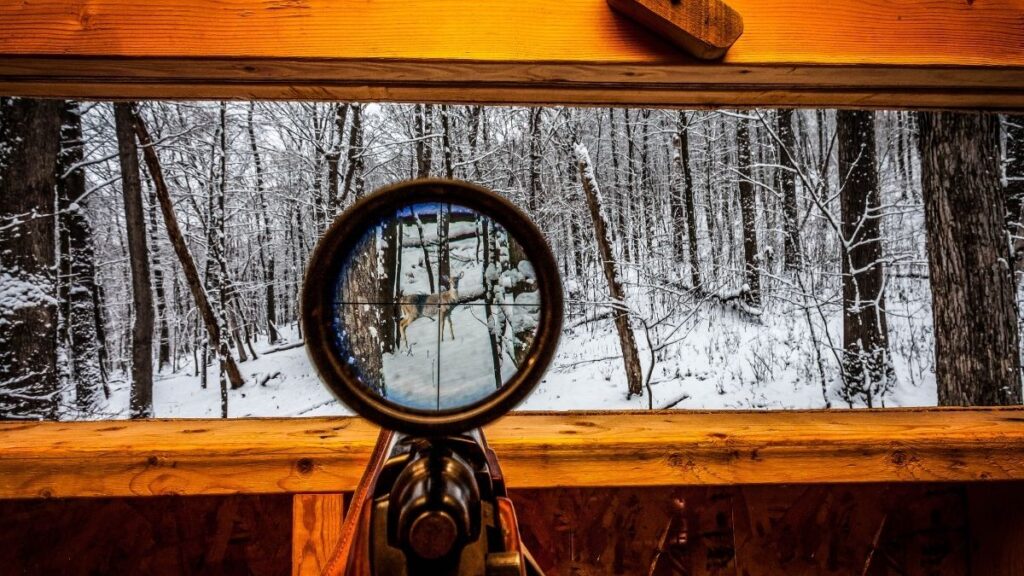
Can a .22LR kill a deer? This question continues to pop up. It can even involve modern airguns; not the latest pre-charged big-bore types of .45 or .50 caliber, but conventional .177 or .22 caliber rifles advertised as “magnums.”
Key Points:
- The .22LR has been used to kill large animals from bear to gators.
- A .22LR will kill a deer with careful shot placement, but hunting with it is illegal in most states.
- The .22LR is much better for small game and varmints.
The occasional feral hog taken by an outdoor TV personality may lead credence to such use, but in reality, even the most potent .22-caliber barrel-cocking “springers” will be hard pressed to beat a .22 Short.
Of course, a .22 Long Rifle is more “powerful” (a nebulous term), and it also has its share of stories between campfires, barstools, and the internet. Some sources may be suspect, but for better or worse, here’s my friend’s story.
.22LR Hunting in Alaska
Many years ago, my much older cousin, Dave, joined a friend for summer-long road trip to Alaska. The mileage alone was impressive since their starting-point was in New England – and then there was the ALCAN Highway. At that time much of this wild route was gravel and notoriously hard on vehicles. Being college kids with scarce funds, their old Ford was already well-used.
Beating the odds though, it not only got them to Alaska, but also near the northern limits of “drivable ” roads. Predictably, at that point, it gave up the ghost – luckily, near a Native Alaskan village. With neither the resources or funds for repairs, the locals began a rescue and provided them with a roof. The resolution proved interesting and led to even greater adventures. Turned out, the small local school was in desperate need of two teachers.
Being proverbial opportunists, strange accents aside, the elders considered these two college boys a providential gift. In short order the travelers were not only residents, but also the village’s official teachers, an arrangement that lasted two years.
Hunting was, of course, a universal practice. Shiny new firearms were absent and ammunition was scarce, but the residents were exploitive and bold. Sometimes, really bold. Dave shared an account of one old hunter armed solely with an iron-sighted, .22 LR bolt-action rifle.
The area was populated with Arctic ground squirrels, preyed upon by large bears. This particular hunter would spot and then stalk a bear, carefully low-crawling the final leg behind a burrow-mound on suitable terrain with the wind in his face. Once in position, he’d raise a fist and move his arm to simulate a squirrel. When the bear drew near he shot it in the eye.
.22LR Hunting in the Swamp
Current adrenaline-charged events can be viewed on Swamp People, where large alligators are dispatched, once again, using battle-scarred rimfires. The Cajun hunters ‘choot ‘em with a single .22 LR bullet, placed surgically to their massive heads at close distance. Some of these ‘gators are over twelve feet long and weigh hundreds of pounds – much nastier and larger than your standard deer!
Well-worn .22 rimfires (including handguns) can also be found at many family farms, often for the slaughter of livestock. Certain results require a surgically placed shot to the brain, delivered at close-to-contact distance. Of course, many of these animals are larger than the biggest deer with the possible exception of moose.
So, yes, you can kill really large animals with a single .22 LR bullet. What about a deer?
.22LR Deer Hunting – Tales to Tails
It’s anyone’s guess how many deer have been poached with .22 LR bullets, so we’ll just go with “lots.” Many are no doubt shot at night while illuminated at fairly close range. It’s also safe to assume a fair amount high-tail off as if unhurt, only to suffer a lingering death.
Thus, a wily old poacher will aim for the head and rely on a single relatively quiet and well-placed shot. Sounds doable in principle, but as all experienced deer hunters know, a head-shot can be pretty iffy regardless of the caliber.
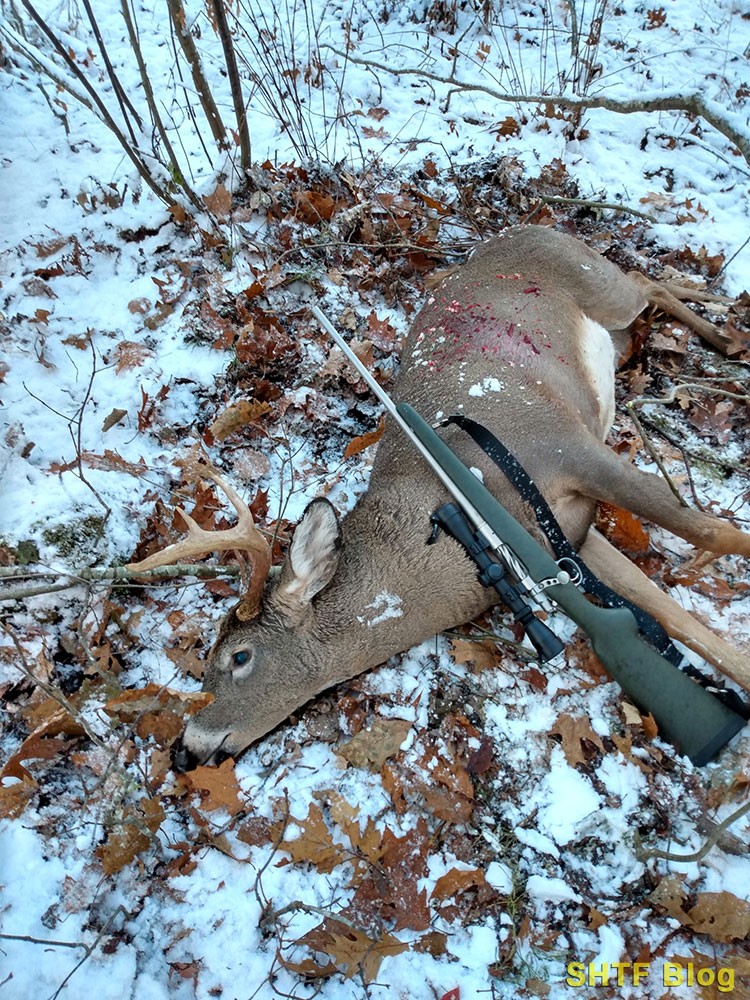
Even a relaxed and feeding whitetail will continuously pop up its head to check the surroundings. And, no matter what, the head is a fairly small target. Some may disagree but the proof is in the pudding (or shooting); I certainly wouldn’t bet the farm on a clean shot. One benefit of my tenure as a Range Rat (AKA: firearms instructor) was an opportunity to witness a lot of shooting – some of it scary.
Among the thousands of folks we cycled through our daily programs, a fair percentage were hunters. Our area is rural and most of ‘em hit the woods at an early age so, as a whole, they could shoot acceptably well; in fact, most kicked butt on our moving target stages.
Occasionally, for extra “training,” we’d attach a life-size deer target to our mover and run it at a fast-paced trot. No surprise here, the deer hunters did better than most others (using shotgun slugs and rifles). But, even from 35 yards, there were still enough “wounded” deer to justify common sound advice – wait for a stationary target.
To the best of my knowledge, no one ever contemplated a head shot – until the cadre did. Results on a stationary head from 35 yards? Sorta gruesome, actually.
Dead deer yes, but also fractured skulls, shot-off noses or jaws, punctured ears – and plenty of misses. No harm though thanks to paper deer – a good thing in light of the educational aspect (tax dollars at work). So, short of actual starvation, scratch me off the .22LR list for deer.
Hunting with a .22LR is Often Illegal
To the best of my knowledge, it’s illegal anyway in most locales. How ‘bout the .22 Winchester Magnum Rimfire (.22 Magnum)? Believe it or not, the .22 magnum is legal to hunt with in my state (rimfire .17s are not):
§11454. Hunting deer with .22 caliber rimfire cartridge
https://legislature.maine.gov/statutes/12/title12sec11454.html
1. Prohibition. A person may not hunt deer with any firearms using a .17 or .22 caliber rimfire cartridge, except that the use of the .22 caliber rimfire magnum cartridge is not prohibited.
2. Penalties. The following penalties apply to violations of subsection 1. A. A person who violates subsection 1 commits a civil violation for which a fine of not less than $100 nor more than $500 may be adjudged.
A. A person who violates subsection 1 commits a civil violation for which a fine of not less than $100 nor more than $500 may be adjudged.
B. A person who violates subsection 1 after having been adjudicated as having committed 3 or more civil violations under this Part within the previous 5-year period commits a Class E crime.
An expanding .22 WMR should do better than a .22 LR but I have no interest in finding out. From the sound of it, most others share this view. You’ll see many more traditional deer calibers, starting at .243 and moving up through the various .30s, etc.
A main reason? Deer are made out of meat and you can’t eat track soup. Another is unnecessary suffering. As responsible hunters, we all try our best to effect one humane shot.
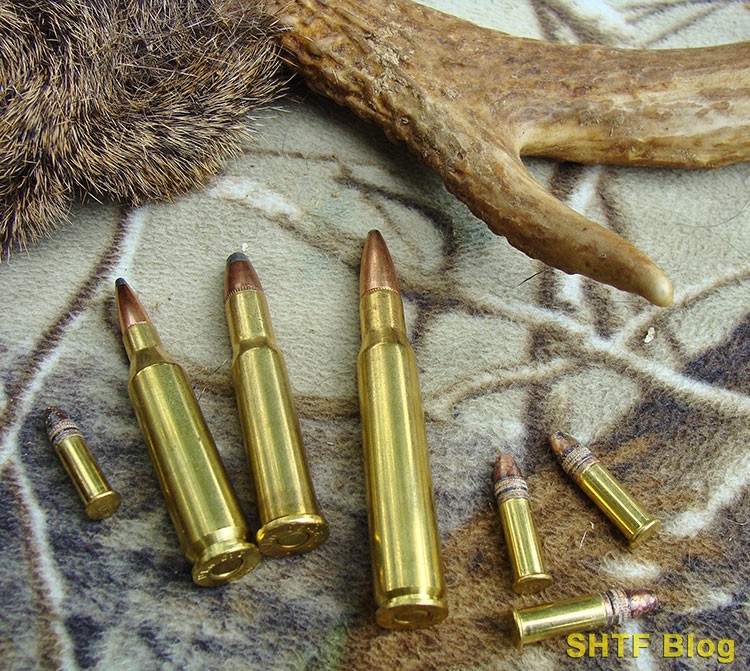
So, What’s a .22LR Good For?
The traditional .22 rimfire iterations are great not only for plinking, but also for small game and some varmints. In their ascending order of power, the options include .22 CB Caps (and a few other low-powered oddities), .22 Shorts, .22 Longs, and of course, the hugely popular .22 Long Rifle.
Both CB Caps and Shorts can be safely fired in a .22 LR chamber. Their reports are ultra-quiet from rifle-length barrels; ideal for picking off rats or other small rodents within 25 yards or so. Moving upward to .22 LR loads, CCI “Quiets” offer similar performance. At very close range, .22 LR Rat Shot (or Snake Shot) loads provide a noisier but safer option if collateral damage is a concern.
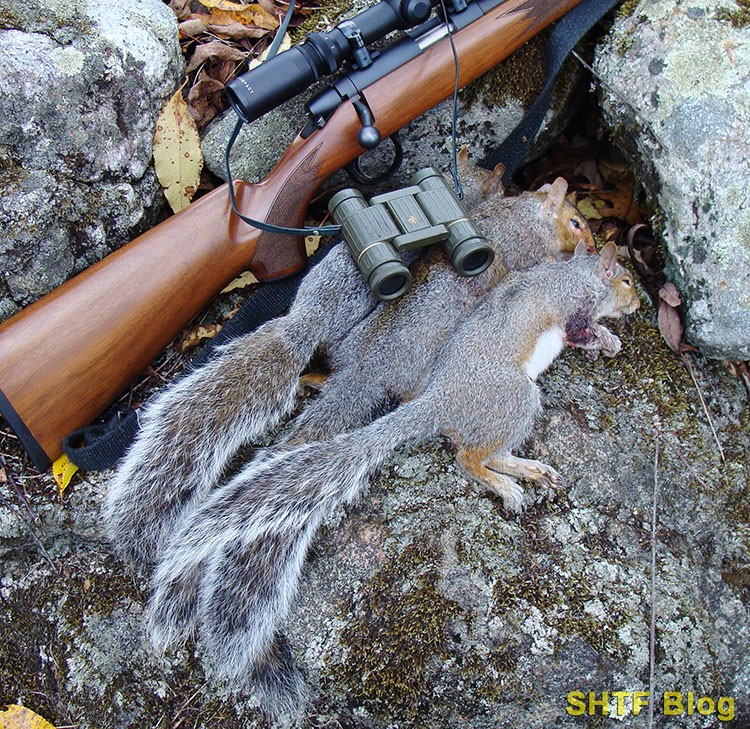
Quarry-size and range can increase through a simple switch to common .22LR loads. The various squirrel and rabbit species are perfect matches. In fact, meat damage can be excessive using high-speed hollow-points, so many serious squirrel hunters use slower subsonic HPs, or non-expanding small game offerings.
In my state, the same .22 LR loads are employed to take treed racoons with hounds. The porcupine is another common boreal target of the nuisance variety. Some are larger than most racoons, but even the smaller ones can soak up bullets. The remedy once again is well-placed hit to the noggin.
Same story for woodchucks (groundhogs), another tenacious rodent. A well-placed .22 LR high-speed HP hit to the body will kill one, but often not before it disappears down a nearby hole. The surer bet is a stalk to within 50 yards and aim just below the ear. For what it’s worth, a .22 WMR rifle is much more effective. Body shots will work well out to 125 yards or so.
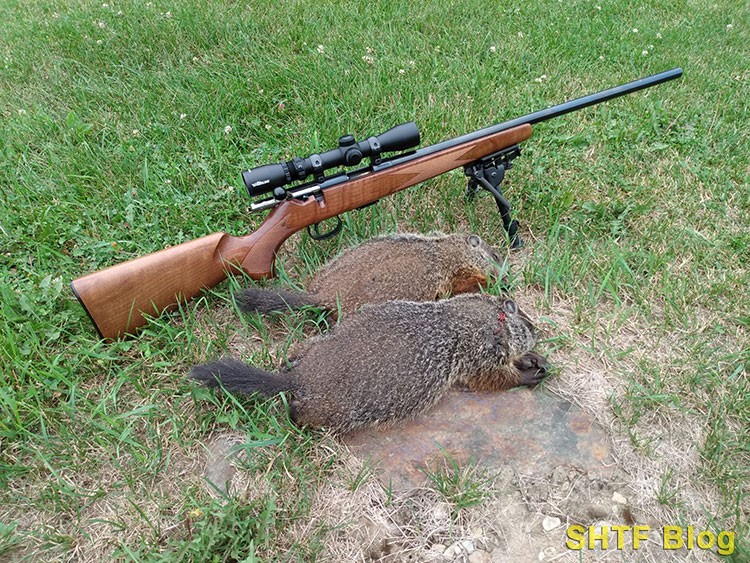
Upper Limits?
Foxes, bobcats, and even coyotes are sometimes taken with .22 LRs, often by trappers. But the .22 Magnum is much more effective for general hunting (including turkeys where legal). Coyotes can vary in size from one region to the next. Our northern New England wolf-hybrids can top 50 pounds; large enough to provide lessons in so-called stopping power.
Many of us have lost these big critters despite well-placed body-shots and expanding .223 loads. The cartridge is up to the job, but easy recovery requires the right bullets – a story for another day.
The .17 HMR also deserves mention. It’s my preferred small-bore varmint choice for use in settled areas, but I draw the line at coyotes. No way I’d use it for deer!
The Bottom Line

Victim of a mauling from coyotes? Good chance! 
And then there’s hunting season. Deer lead hard lives.
Coyotes are just plain tough, but deer can take a beating too even though they’re often classified as “thin-skinned” game. Typical of other northern climes, our Maine whitetails grow large because the winters are severe. Snow is often measured in feet and hungry coyotes are never far behind.
Those that survive have already endured the rigors of deer season, and not all emerge unscathed. Most of our local chop shops have at least one broadhead or bullet on hand, discovered during butchering. The majority involve deer with healed wounds.
Although the “right” caliber is highly subjective, for those in my deer hunting circle, the aforementioned .243 Winchester (or similar recent 6mms) constitute the lower threshold – a far cry from any .22 rimfire!
That said, if faced with a serious bug-out requiring extended travel by foot, I’d at least consider a .22 rifle; probably a take-down model with a 500-round brick of high-speed.22 LR HPs. A deer would still be the last resort, though. Smaller critters including birds are a lot more portable – and they’re also made out of meat. Meanwhile, a swarm of .22-caliber bees would offer at least some defensive reassurance!
For more information on rimfire calibers, consider my book on the subject:
- Markwith, Steve (Author)
- English (Publication Language)
- 182 Pages - 09/28/2015 (Publication Date) - Prepper Press (Publisher)


1 comment
where can I order a cheap stock for a .22 lR Winchester single bolt